PLEASE CONTACT THE NEW HOMEPAGE AT >> www.bio.uni-frankfurt.de/ee !!
Research Overview, valid until 2013/2014
> Objectives and financial support
> 1. Biodiversity and Climate
> 2. Reaction of river systems under climate change
> 3. Macro- and microevolution of Sulawesi tarsiers ("Koboldmakis")
> 4. Phylogeny and phylogeography of Gazella with focus on the Arabian Peninsula
> 5. Natural hybridization
> 6. Biogeography and evolution of freshwater crabs
> 7. Mate choice in communication networks
> 8. Population ecology and communication networks in urban rabbit communities
> 9. Phylogeography of Mediterranean freshwater limpets
> 10. Biodiversity of the herpetofauna in the tropics
Objectives and financial support
The disciplines of ecology and evolution both contribute substantially to an understanding of the causes for the massive environmental change currently observed on earth.
The Department of Ecology and Evolution focuses on the study of ecological and evolutionary changes of biological species and biological communities, analyzing the past and current change occurring in selected environments. We traditionally focused on freshwater systems (Rhine River, Lake Constance) and their endemic and invasive species (molluscs, crustaceans, chironomids, fishes), but extended our research during the last years, both with respect to taxa and to areas and regions studied.
As the interaction between man and environment and as his current and future impact on earth has much to do with his biological nature, behavior and sociology, we include facets of vertebrate behavior in our studies.
During the last five years, financial support for our research came from:
- State of Hesse – LOEWE initiative: Biodiversity and Climate Research Centre (BiK-F), Cooperation with Senckenberg
- Deutsche Forschungsgemeinschaft (DFG)
- Deutscher Akademischer Austauschdienst (DAAD)
- Bundesamt für Naturschutz in Bonn (BfN)
- MainCampus Stipendiatenwerk der Stiftung Polytechnische Gesellschaft
- World Wid Fund for Nature (WWF)
- and various other foundations, e.g. Studienstiftung des deutschen Volkes, Fazit-Stiftung, GRADE (Goethe Graduate Academy), Freunde und Förderer der Goethe-Universität
The following overview summarizes the research lines we are currently studying and which have resulted in internationally peer-reviewed scientific publications. The responsible senior scientists are listed individually in the headlines.We do not include our public engagement for biodiversity – for this aspect cf., e.g., BioFrankfurt – The Network for Biodiversity.

1. Biodiversity and Climate
Series of long-term projects 2008-2014. Responsible Scientists: Bruno Streit, Martin Plath, in cooperation with Klaus Schwenk (Professor University of Koblenz/Landau) and Markus Pfenninger (Professor BiK-F)
- Background: Since July 1, 2008, we are cooperation partner and member of the new Biodiversity and Climate Research Centre (Biodiversität und Klima Forschungszentrum, BiK-F). BiK-F (pronounced "big ef") is a joint Centre between Senckenberg, the Goethe University as well as several other institutions. The Centre is supported by the State of Hesse (LOEWE initiative) with approximately 44 million € for research support for six years and another roughly 20 million € for building refurbishment and installations.
- > Bruno Streit was coordinator of Research Area C: "Adaptation and Climate" (2008-2011) and is currently PI on a project on > river systems
- Martin Plath is supervisor, together with Bruno Streit, of two various PhD, master, and bachelor projects
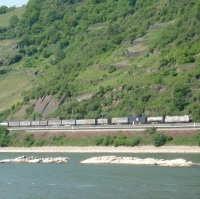
2. River systems under climate change and global faunal exchange
Responsible Scientists: Bruno Streit, Martin Plath, Sebastian Klaus
- Introduction: River ecosystems suffer three fold from climate change: (1) They are exposed to the local environmental temperature rise, which is roughly 0,7°C worldwide, but higher regionally; (2) they additionally suffer from thermal effluents, for instance from power plants; (3) they become more susceptible to daytime insolation at low water levels (escpecially in summer time), which themselves are the result of increased water usage and reducing supply form glaciers and snow covers in the mountains. These changes in environmental abiotic factors interact with an enhanced exchange of biota and a fast species turnover with increased population genetic dynamics.
- Methods: Our studies combine field measurements, laboratory experiments (on thermal tolerances, behavioral studies, feedings studies). We focus on selected species, such as invsive amphipods (Gammarids) and selected fish species.
- Financial support: BiK-F, others.
- PhD students: Wei Chen (Invasion front dynamics of Pontocaspian amphipods in the Rhine system), Jonas Jourdan (Studies on the invasive freshwater fish Gambusia)
- Project duration: 2011-2014
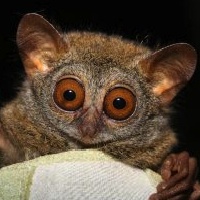
3. Macro- and microevolution of Sulawesi tarsiers ("Koboldmakis")
Responsible Scientist: Stefan Merker (now at Stuttgart Museum of Natural History), Yvonne Bohr (PhD student)
- Introduction: Huge eyes, large ears and long fingers, toes and tarsal bones are conspicuous traits of Southeast Asian tarsiers. They have evolved independently of any other extant lineage for about 60 million years (i.e. tarsiers have no close relatives). Once roaming most of the Northern hemisphere, tarsier-like primates experienced a strong post-Eocene range reduction, followed by an impressive radiation on Sulawesi. This fourth-largest of Indonesia’s islands is the main landmass of “Wallacea”, the transition zone between Asian and Australian faunas. Sulawesi boasts an extraordinary diversity of endemic fauna and is thus an ideal model region to study evolutionary processes at different scales. – Our methods used include radio-telemetry, bioacoustic analyses (of duet calls), microsatellite genotyping, sequencing of mitochondrial, Y-chromosomal and autosomal genetic markers.
- Current subprojects:
a) Molecular phylogenetics: Multiple genetic markers to analyse phylogenetic relationships, to date speciation events and to understand the timing and direction of tarsier dispersal across Sulawesi. How does this relate to plate-tectonic shifts and sea level fluctuations?
b) Phylogeography: Genotyping tarsiers with maternally, paternally and biparentally inherited markers, we look for signatures of population expansions, reproductive barriers, sex-specific dispersal and interspecific gene flow.
c) Introgressive hybridisation: We found asymmetric introgression between two central Sulawesi tarsier species. What is the rationale behind this pattern? Who mates with whom and why and where and how often?
- Financial support by DFG 2011-2014
- Project duration: Long-term project, in progress
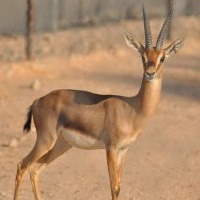
4. Phylogeny and phylogeography of Gazella with focus on the Ariabian peninsula
Responsible Scientists: Martin Plath, Hannes Lerp (now at Mainz University)
- Introduction: The Arabian Peninsula is a prime example of an area connecting two continents: Africa and Asia. From the geological past of the two continents until now there has been repeated faunal exchange between both. Of particular interest are the colonization routes of gazelles which occur in Africa, Asia and the Arabian Peninsula, because of their avoidance of humid climate and/or arboreal vegetation. Our investigation may lead to general new insights into the mechanisms of mammal dispersal, particular under changing climatic conditions during the ice ages. Furthermore, the phylogeny of these endangered species is far from being established. Classification and taxonomy within the genus Gazella using morphological features is problematic because of the high phenotypic variation within lineages. Molecular genetic studies so far only analyzed short fragments of mitochondrial markers and were not able to uncover genetic structure among populations, i.e., below the species level.
- Aims: (a) To create a robust phylogeny of Arabian gazelle species as well as their relationships to African and Asian species, and on a small-scale, phylogeographic analyses for selected taxa on the Arabian Peninsula, using different mitochondrial and nuclear markers. (b) Reconstruction of phylogeographic colonization patterns in G. gazella and G. subgutturosa at a higher resolution. (c) To improve the conservation efforts of this critically endangered group of animals.
- Collaboration partners: Torsten Wronski (King Khalid Wildlife Research Centre, Saudi Arabia and Zoological Society London, UK) andChristoph Bleidorn (Group Molecular Evolution and Systematic of Animals, University of Leipzig).
- Financial support: in part by BiK-F and by Polytechnische Gesellschaft
- Project duration: 2009-2013, project has come to the end, results are currently being published
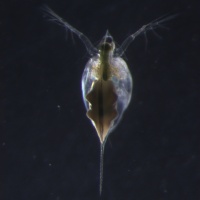
5. Evolutionary adaptation potential of daphnids (genomics adaptation)
Responsible Scientists: Klaus Schwenk (University of Koblenz-Landau), Nicole Henning (PhD student)
- Introduction: We studied the evolutionary and genetic consequences of interspecific hybridization in Daphnia. In more recent times we extended our studies to the evolutionary adaptation potential of the respective daphnid species and extend our studies to genomics.
- Experimental design: The studies have focused on the fitness of hybrids, parental taxa, backcrosses and inbred lines under different food qualities and in addition on the reconstruction of evolutionary histories and genetic architectures of hybridizing lineages using genetic analyses of resting egg pools covering several decades. They were performed using material and data from Bodensee and from Greifensee (Switzerland). Meanwhile, we extended the research to several other European lakes.
- A joint DFG project to the original goal had been granted to Klaus Schwenk together with M. Boersma (AWI Helgoland). In this study, Daphnia clones were subjected to algae with different C:P ratios and a number of fitness related life-history parameters is measured. Parallel to the life history experiments we estimated the natural population structure and the genetic variation of experimental clones using neutral genetic markers. – Meanwhile the genomics aspects are treated in strong interaction with BiK-F projects (PhD student Nicole Henning).
- An international Symposium on Hybridization in Animals (Extent, Processes and Evolutionary Impact) was held at Frankfurt University and organized by Klaus Schwenk, Bruno Streit, and Nora Brede. The major results of this symposium have been published in the Philosophical Transactions of the Royal Society B 2008 (363: 2803-2961).
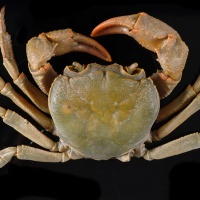
6. Biogeography and evolution of freshwater crabs
Responsible Scientists: Sebastian Klaus
- Introduction: Freshwater crabs (Crustacea: Brachyura) are brachyuran crustaceans that are adapted to the freshwater environment – in contrast to their marine relatives – by lecitothrophic eggs, absence of planctonic larvae and by brood care. Lineages are thought to be drainage basin specific and therefore considered as biogeographic indicators. In several phylogeographic projects we test assumptions using molecular markers, molecular clock derived divergence time estimates, model selection approaches, and methods of biogeographic reconstruction.
- Past and present subprojects:
a) Phylogeography of freshwater crabs in the Mediterranean area.
b) Correlating the historical biogeography of the neotropic Trichodactylidae with palaeogeographic and palaeclimatological events.
c) Freshwater crab phylogeography at the edge of the Wallace line.
d) Evolution of freshwater crab reproductive morphology (gonopods, spermathecae, spermatozoa and spermatophores).
e) Palaeontology of freshwater crabs. - Financial support: various sources.
- Project duration: long-term project.
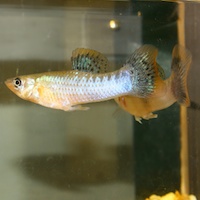
7. Mate Choice in communication networks
Responsible Scientists: Martin Plath, David Bierbach (now at IGB Berlin)
- Full Title of project: "Mate choice in communication networks: the role of an audience"
- Introduction: Mate choice plays a major role for sexual selection processes.Traditionally, mate choice is viewed as an exchange of information between just two individuals. More recently, studies have highlighted the role of social context for mating decisions, which acknowledges that individuals other than the intended receiver can use public information. Previous studies have shown that Poecilia mexicana males (Poeciliidae), when observed during mate choice by an audience male, show weaker expression of mating preferences. This may be an adaptation to avoid sperm competition, since other males likely share intrinsic mating preferences, or even copy the focal male’s mate choice.
- Aims: We used a comparative approach to examine if audience effects are common in various poeciliids with different mating systems. We test for a correlation between male aggression and the strength of audience effects, testing the (“split-attention”) hypothesis that an aggressive rival would simply divert males from mate choice. We also examine whether the social environment during ontogeny (male- vs. female-biased sex ratios) affects the strength of audience effects, which will be examined in an experimental approach and in the field.
- Overall, the results from this project provides novel insights into the multiple ways by which multi-directional communicative interactions in social networks affect the behavior of both signalers and receivers of information.
- Financial support by DFG,, others.
- Project duration: 2010-2013, project has come to the end, results are currently being published.
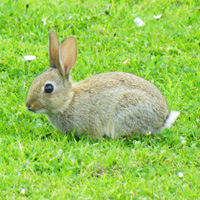
8. Population ecology and communication networks in urban rabbit communities
Responsible Scientists: Martin Plath, Madlen Ziege, Stefan Merker
- Introduction: We often have a vague understanding only of how mammals cope with (and adapt to) life in urban regions. We therefore are studying ranging patterns, territorial behaviour and metapopulation genetics of rabbits inhabiting metropolitan Frankfurt. Which behavioural adaptations characterize “city mammals”? How are communication networks affected by human nuisance? Are urban populations in gene flow contact with each other and with populations outside of the city? How efficient are “green corridors” for dispersal?
- Subprojects:
a) Communication networks in European Rabbits (Oryctolagus cuniculus): We aim to understand how “Big-City-Life” affects habitat use and intraspecific communication in wild rabbits (e.g. information exchange through latrines, peripheral vs. core territorial marking).
b) Population genetics of European Rabbits: Genotyping rabbits and their faecal pellets with a number of genetic markers (including microsatellites) will enable us to outline genetic diversity within and gene flow among rabbit populations in parks across Frankfurt.
- Strategic collaboration partner: Grünflächenamt der Stadt Frankfurt/Main, others.
- Project duration: ongoing, coming soon to an end.
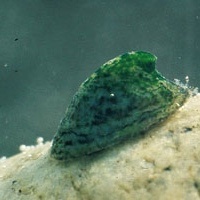
9. Phylogeography of Mediterranean freshwater limpets
Responsible Scientists: Sebastian Klaus, Bruno Streit
- Introduction: Freshwater limpets of the genus Ancylus (Gastropoda: Basommatophora: Ancylidae) have a wide European and circum-Mediterranean distribution. While in temperate parts of Europe the nominate species Ancylus fluviatilis dominates, in the Mediterranean area several cryptic lineages occur. Phylogeographic patterns are presumablly very complex, as Ancylus sp. is subject to passive dispersal with water fowl and insects. Moreover, the possibility of selfing by Ancylus sp. most probably promotes both establishment of lineages in new areas and allopatric divergence.
- Aims: We want to clarify phylogenetic relationships within Ancylus spp. based on sequence markers and answer basic phylogeographic questions: Where did the genus Ancylus originate, and did geological/palaeoclimatological events contribute to its range evolution? How did selfing and long distance dispersal shape biogeographic patterns, and are there differences between lineages?
- Collaboration partners: Dr. Christian Albrecht, University of Giessen, others.
- Financial support: various supporters, depending on the stage of progress, currently BiK-F (LOEWE) for the climatic aspect.
- Project duration: this project is part of a long-term project series (since 1972) on the ecology, physiology, genetics, and evolution of the the nominate species "Ancylus fluviatilis".
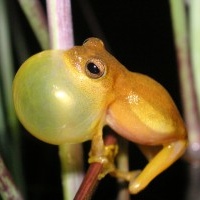
10. Biodiversity of the herpetofauna in the tropics
Responsible Scientists: Gunther Köhler (Curator of the Herpetology Section of Senckenberg) in collaboration with Bruno Streit, various PhD students
- Introduction: Biodiversity and zoogeographical studies of reptiles in the tropics represent a long-term cooperation project with Gunther Köhler from Senckenberg in Frankfurt. The project has provided several diploma and PhD theses (e.g., PhD theses by Edgar Lehr, Javier Sunyer, Vincenzo Mercurio, Martin Jansen)
- Current and recent studies concentrate on Central and Southern America (Peru, Bolivien, Venezuela, Nicaragua, Panama and others: and on Africa (Malawi). Current PhD theses (in part preliminary German titles):
a) Andreas Hertz: Zusammensetzung, Evolution und Ökologie der Amphibiengemeinschaften im Hochland des westlichen Panama.
b) Sebastian Lotzkat: Diverstität, Taxonomie und Zoogeographie der Reptilien eines Transektes entlang der Zentralkordiellere im westlichen Panama.
c) Johannes Köhler: Evolution kryptischer Saumfingerarten (Polychrotidae). (Thesis started in 2008)
d) Arne Schulze: Amphibien im Mosaik aus Savanne, Trocken- und Regenwald: Was beeinflusst die Reproduktion und Diversität im Tiefland Boliviens? (Thesis started in 2008) - Financial contributions: Different sources,e.g., DAAD, Studienstiftung des deutschen Volkes, Fazit-Stiftung, Otto-Stern-Schule, various minor funds.
- Project duration: long-term project.
Die angegebenen Verweise auf externe Webseiten von Kooperationspartnern und Institutionen erfolgen einzig aus Gründen der Darlegung unserer wissenschaftlichen Vernetzung und Resonanz. Auf mögliche sonstige Inhalte oder weiter führende Links der fremden Webseiten haben wir keinen Einfluss. Wenn indadäquate oder nicht mehr gültige Links aufgeführt sind, bitte ich um eine E-mail-Mitteilung. B. Streit.